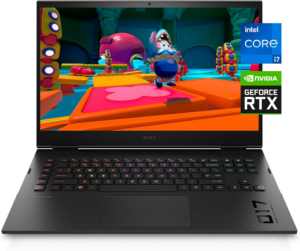Most gamers these days are all too familiar with terms such as DLC, lootboxes, in-game currency, and the more recent addition, cosmetics. Whatever your opinion on them is, marketing strategies have undeniably played a huge part in what has become a multi-billion dollar online and mobile gaming industry. Public and consumer demand, however, has also caused quite a roller-coaster ride for the evolution and use of microtransactions in games over the past decades.
The Horse Armor Of Elder Scrolls IV: Oblivion
The horse armor DLC that came with the mid-2000s classic, Elder Scrolls IV: Oblivion, was arguably the first instance of microtransactions in a popular game. Priced at $2.50, and being a purely cosmetic item, with no added buffs, abilities, or advantage in any way, it was generally given a hard pass by the majority of players. It was, however, ultimately a proof-in-concept that microtransactions—in this case, paid-for DLC—were doable.
Facebook Games Create A Standard Model For Microtransaction
While DLC in PC games became steadily more popular in the late 2000s, social media, largely dominated by Facebook and online gaming, was also on the rise. Free Facebook games became a hot new trend and a hotbed for new innovations to in-game marketing.
Popular games like Candy Crush Saga, Angry Birds, Farmville, and many other titles were creating the basis for new ways to complete microtransactions via in-game currencies and bonuses purchased by players with real money. This, in turn, created a huge revolution and boom in revenue for the gaming industry. It also created the opportunity for many new, independent, and up-and-coming game developers to enter the market.
The Rise Of Free-To-Play Games
Over the 2010s, with the mobile industry revolution changing the world, many mobile games began to adopt the microtransaction model of online Facebook games, developing it to even greater heights of success.
This then quickly spread to the online PC platform, allowing for the first free MMOs, and would soon become a prominent factor in the evolution of online gaming.
The Introduction Of Lootboxes & Pay-To-Win
Lootboxes have become a rather contentious subject in the gaming community over the years. First introduced in online free-to-play games, they were initially a way to entice players to keep playing by providing random items to aid them. This proved to be a little too successful though. Many greedy and overeager game developers began to combine lootboxes and microtransactions, giving players that were willing to pay an unfair advantage over others.
Furthermore, the addition of microtransactions to random lootboxes was deemed gambling and, therefore, was wholly unsuitable for young players. It also encouraged problem gamblers to find new avenues for their habits and became hugely controversial.
The Spread To Triple-A Games
This issue reached its peak around the mid to late 2010s, when many triple-A game developers, seeing the potential for greater profit, began to incorporate microtransactions, as well as lootboxes, into their games. Companies such as EA received huge backlash for popular games like Star Wars: Battlefront 2, which used lootboxes and pay-to-win tactics to an unacceptable degree, made worse by the fact that it was already a paid-for game.
Over the next decade, following the backlash from the gaming community, the public, and even the government laying down the law and threatening to regulate the online gaming industry, many triple-A game companies were dealt an important lesson.
New Strategies & Smaller Microtransactions
Since then, pay-to-win tactics and random lootboxes are still found in many games But the general trend has been towards smaller microtransactions and lootbox items that offer little to no advantage.
Cosmetic items, such as clothing, have become the generally accepted middle-ground in the majority of online games nowadays. Many games now also use their own unique methods and techniques to promote and access exclusive content online. Borderlands 3 shift codes are an excellent example of this as they’re available at 3rd party sites where gamers can lay claim to them.
Otherwise, expansion packs for games have also made a comeback as a popular form of paid-for DLC, greatly prolonging interest and game sales, and even winning game awards.
A Gamer-Focused Future
A gamer’s experience of microtransactions and lootboxes will largely always depend on the games they play and what they are looking for.
Free games will generally always cater to casual gamers, with microtransactions being an understandable necessity to generate profit. In other games, though, the growing voice of gaming communities around the world has shown to be a prominent influence on the way games are being made, and will be made in the near future.
















